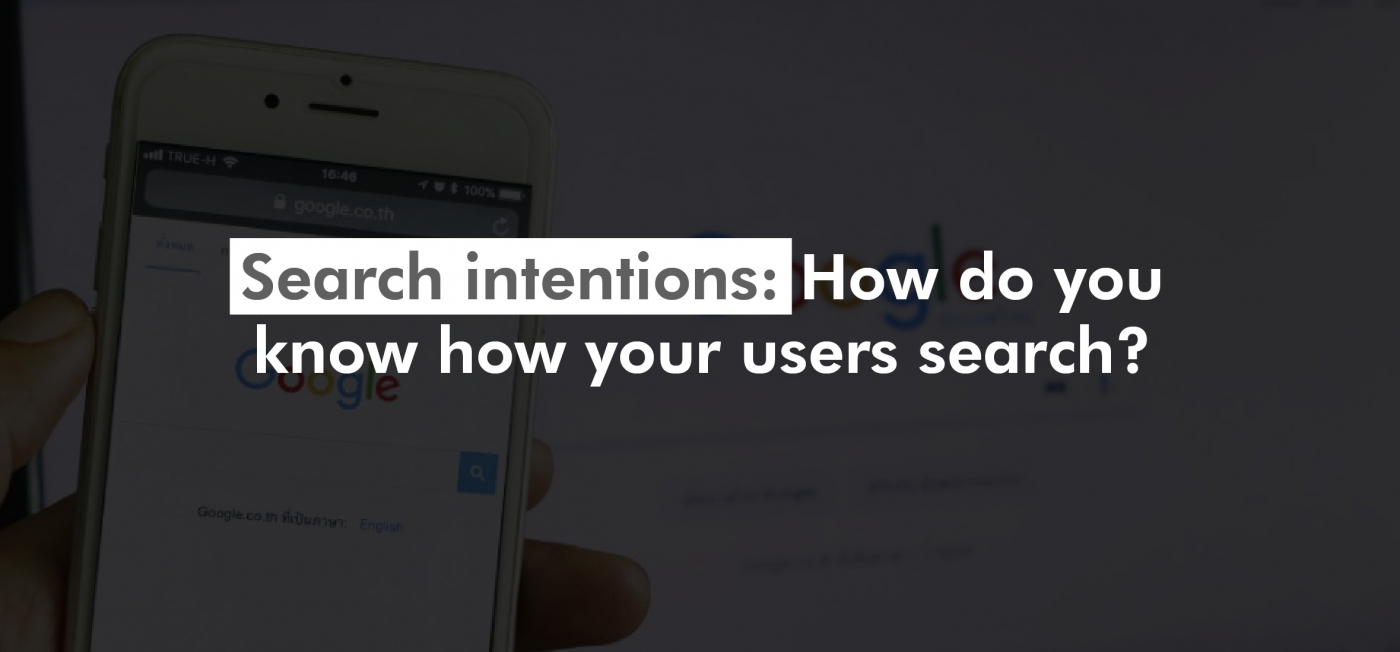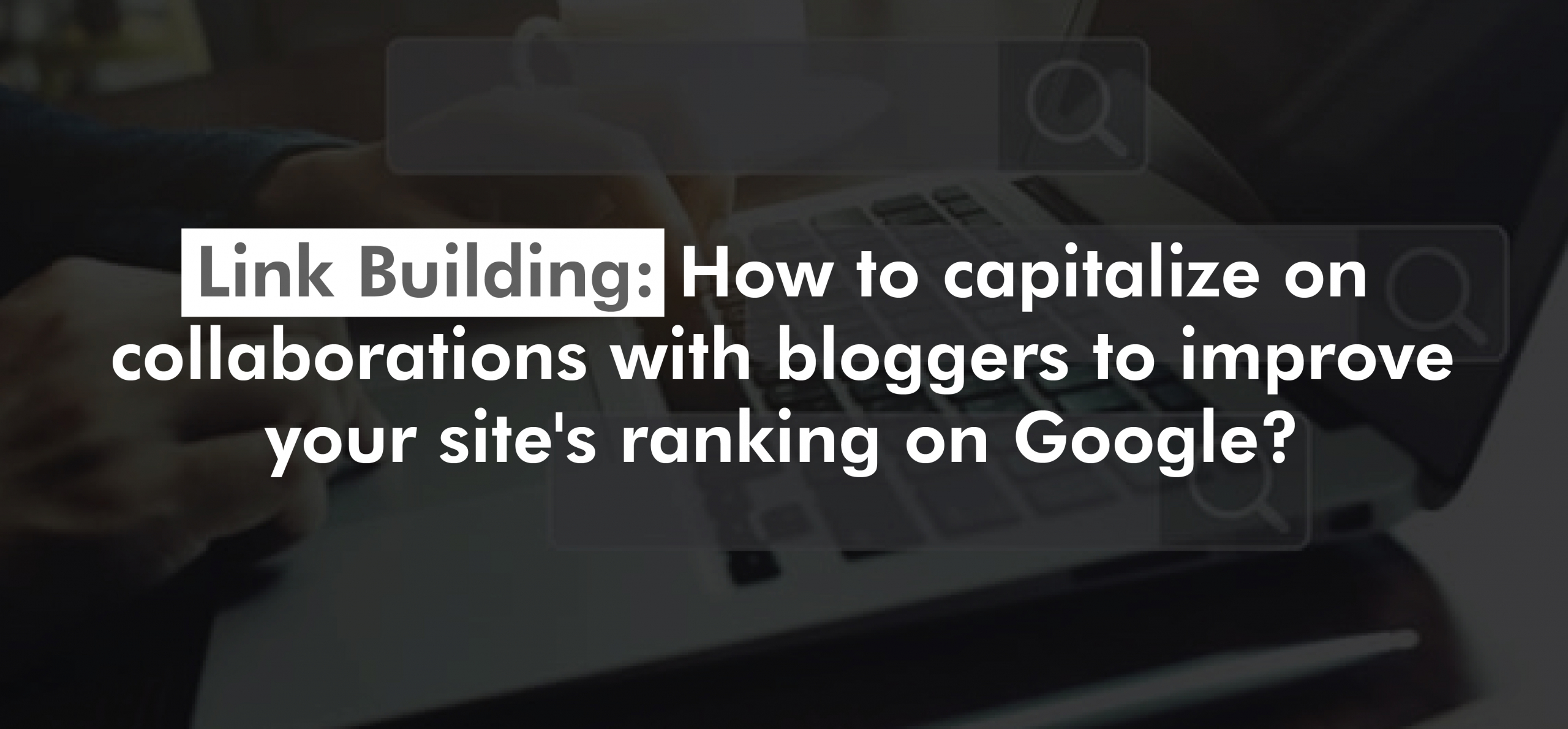Google and other search engines have improved their search results over the last few years with the sole purpose of better satisfying users’ search intent. Sometimes they even show the answer to the query before the URLs of third-party websites that rank in the SERPs.
An example of this is the query “weather” in which for some years now Google shows the weather, forecast, and other data about it within the search results (without the need to enter any website).
In the same way, the algorithm that calculates and chooses which URL’s to rank for certain keywords has improved to meet this user search intent.
The question is, are you optimizing your content and website according to the user’s search intent? Do you know what kind of search intent exists?
What is search intent in SEO?
Before defining the search intent in SEO, let’s see what the search results in Spain show for three keywords: “best robot aspirator” and “buy robot aspirator”.
In “mejores robot aspirador” shows a zero result with a list of what may be the most outstanding robot aspirators, prioritizing the information over the transaction:
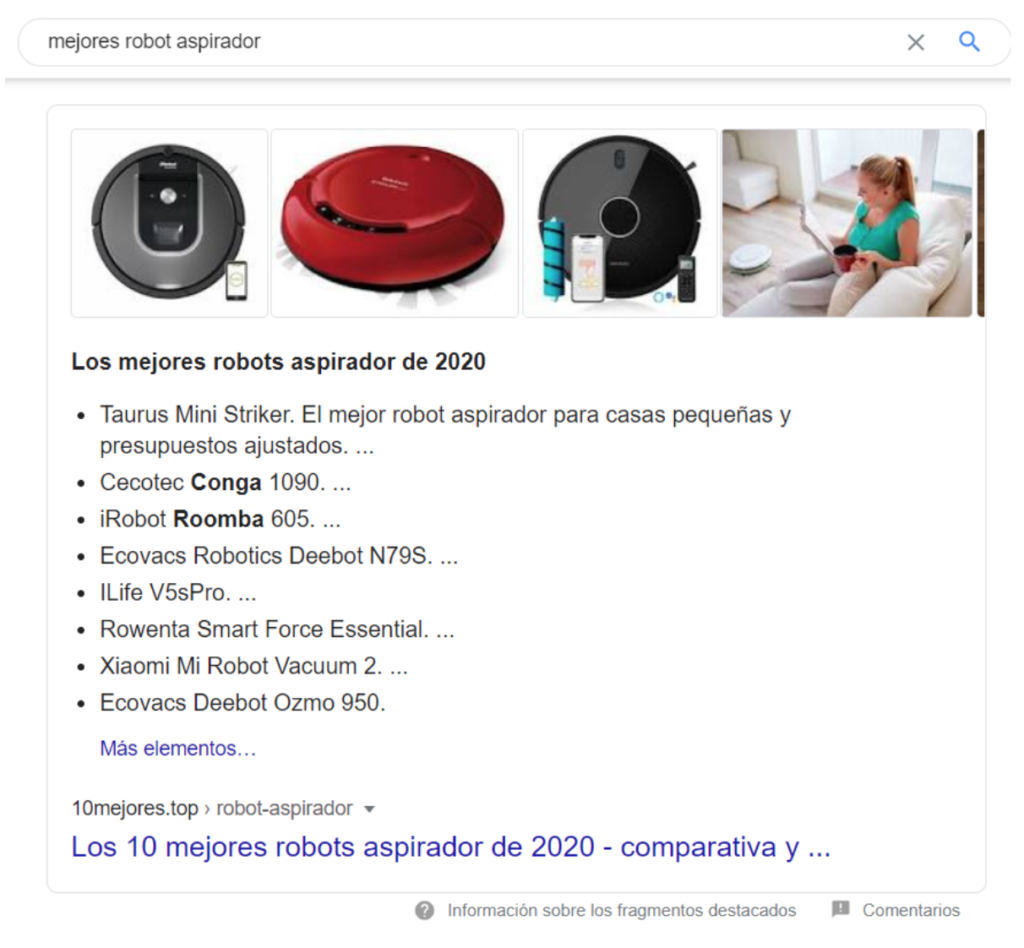
Meanwhile, for the second case, just by changing “mejores” to “comprar” we see that the search results change completely:
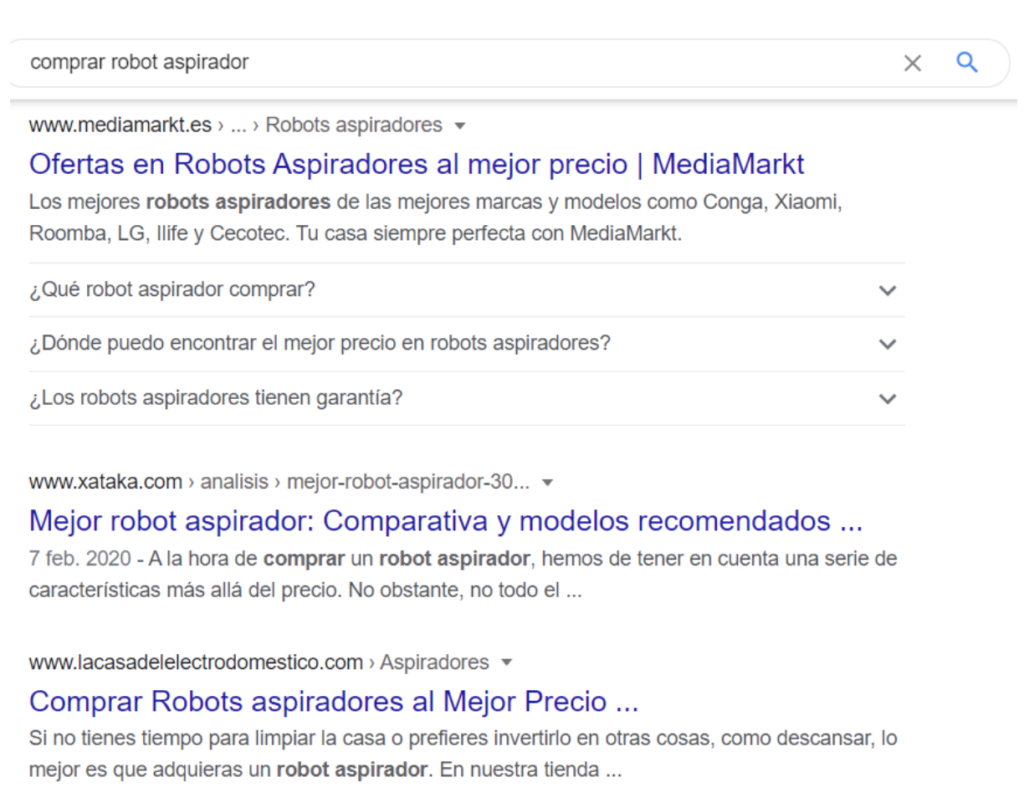
We can see that in the first place a zero result with the list of products no longer appears and in its place appears e-commerce where, if you click on it, you will be closer to the purchase process.
Is it a coincidence? Not at all, Google understands better and better when the user is closer to purchase and therefore “modifies” its results to better satisfy the search intent.
Therefore, we can define it as “the will and motivation on the part of the user behind each search engine query”.
In this sense, some practical questions:
- For which of the two queries is it better to work with informative content?
- In which of them can you prioritize a list of products with prices and comparisons?
Let’s see then what are the types of search intent and how to improve the way we approach our content on our website.
Types of search intentions
In theory, we can define the types of search intentions in three types:
- Informative: the user wants to obtain specific information on a subject or to complete some research. Example: how to make a paper airplane.
- Navigational: in these cases, the user has already defined that he/she wants to use a specific website and navigate it. Example: login to Facebook.
- Transactional: here the user has already defined his purchase process and is a few clicks away from completing a transaction. Example: buy nike womens pink sneakers.
However, it may be too generic to try to incorporate all types of content and searches in these three main blocks.
In fact, within the informative, it is not the same to search for “reset my smart tv” as it is to search for “history of the second world war”.
While both search intentions are solved with information, the way this information is displayed varies for each one: in the first one, Google already shows a step-by-step on how to do the reset, while in the second one it understands that the user will need a more detailed explanation about the Second World War by showing Wikipedia first and then a series of Youtube documentaries.
According to Google’s Quality Guidelines, we can find:
1. Know and Know Simple
In this case, the user’s query is oriented to obtain information that can be general or specific.
If it is general, we are talking about a “Know” search. An example of this could be the query “Pampita”:
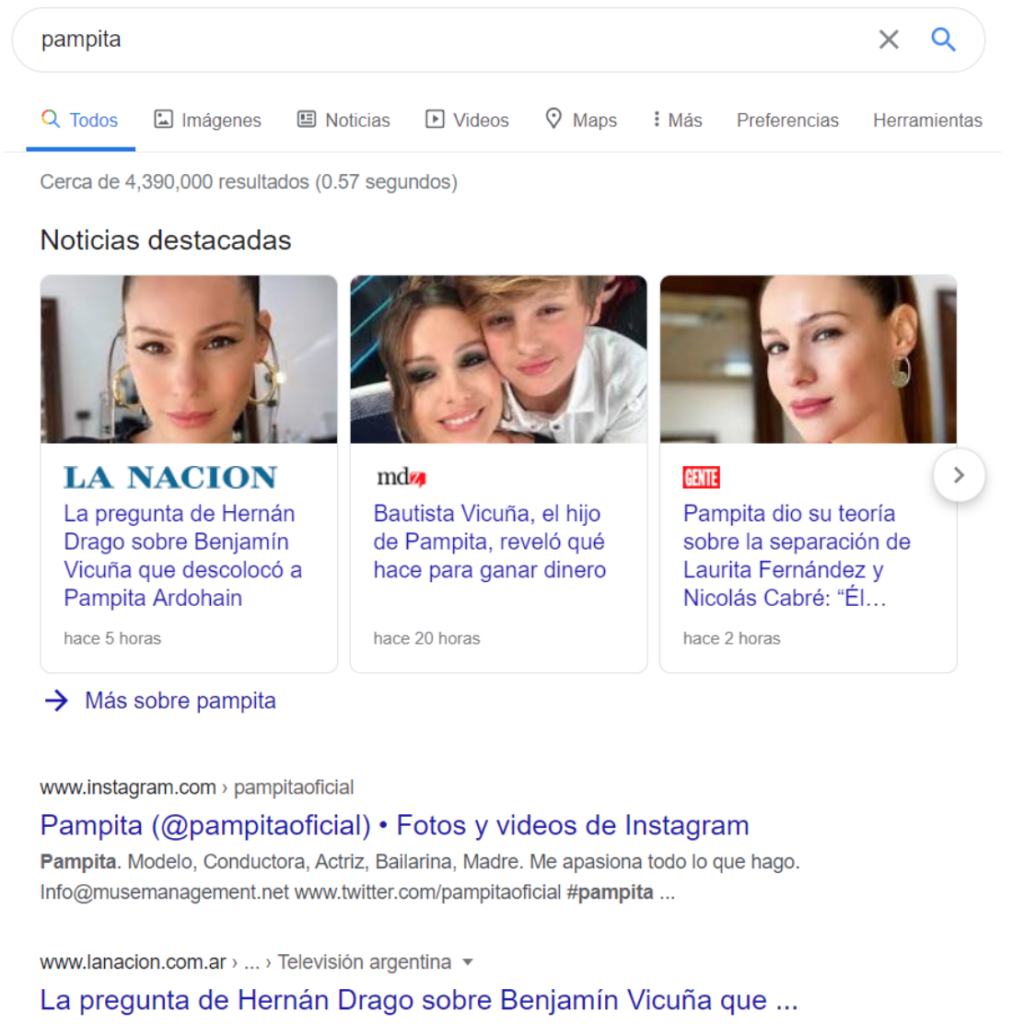
Being so general, and being a public figure, Google prioritizes news, social networks, and the artist’s biography.
Meanwhile, if we go to a more specific search such as “Pampita’s age” we would be referring to “Know Simple”.
In fact, for these searches many times Google shows the answer directly in the SERPs:
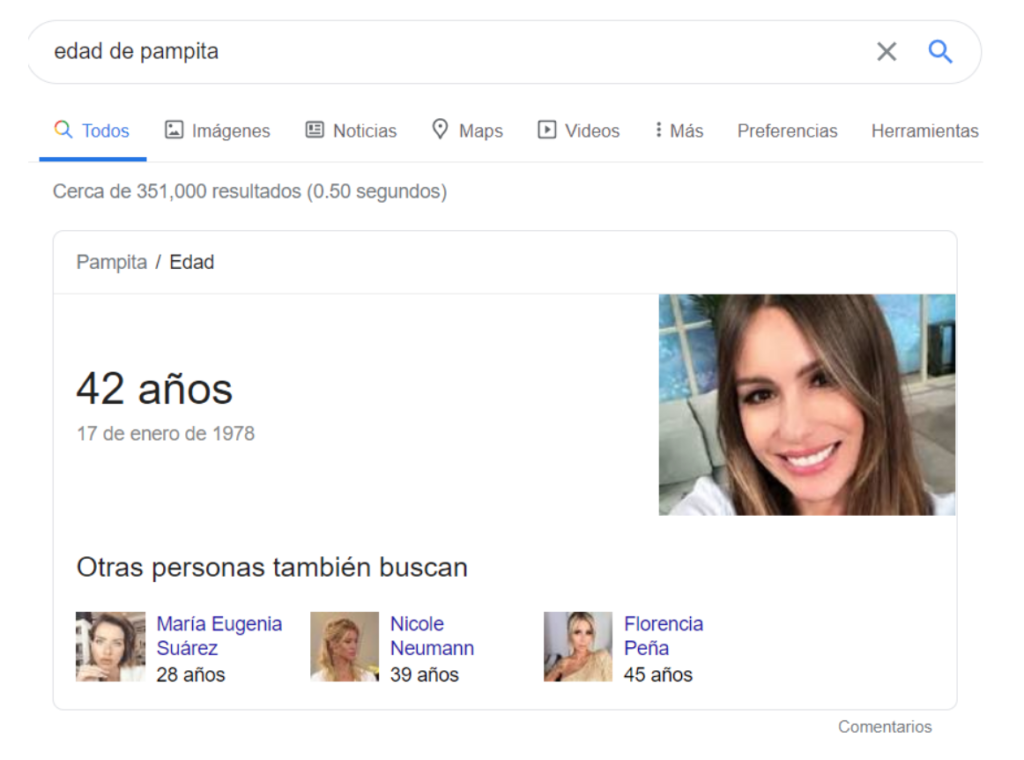
2. Do – Device action
Do queries are those in which the user wants to make use of some functionality on the Internet. An example of this would be: downloading data/apps or programs, buying something in an eCommerce, or making an online transaction, among others.
On the other hand, in Device Action, we find interactions that can be done with the device through voice searches. For example: calculate the distance between one location and another while driving.
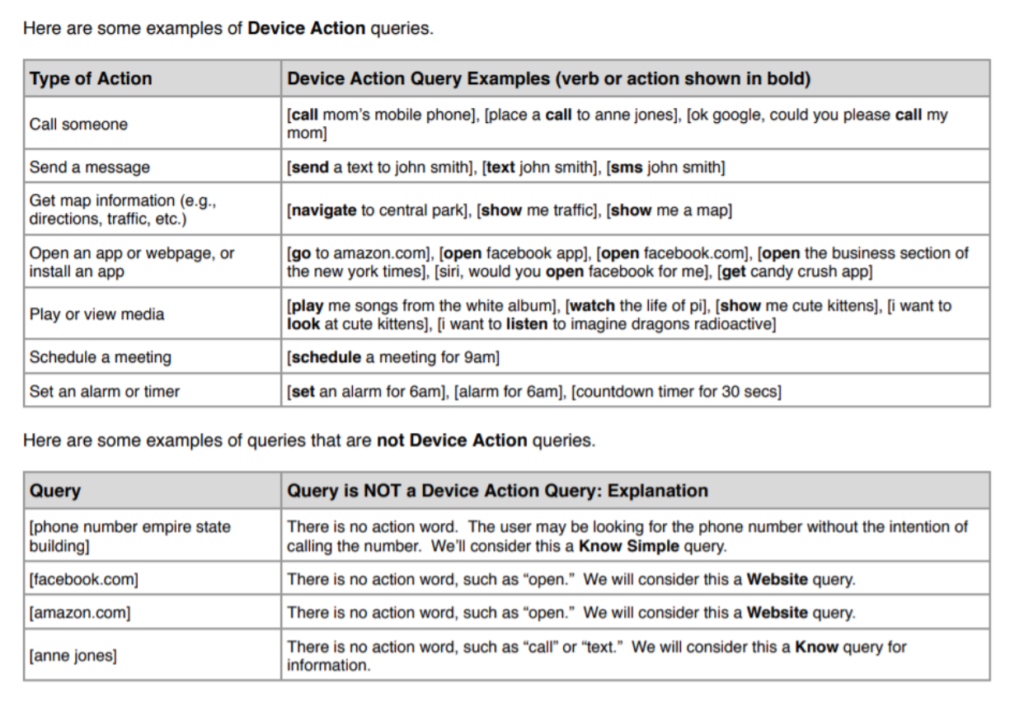
3. Website
From my side, I can add that these are the type of keyword + brand queries that we usually see in the SERPs.
They delimit an action on a specific entity so Google prioritizes the “brand” we are including in the keyword.
For example amazon sneakers.
Depending on how certain keywords are searched we can find perfect or imperfect queries:
- Perfect: www.amazon.com or “https://www.amazon.com”.
- Imperfect: “amazon usa”.
4. Visit-in-person
They have to do with the visit in person to an area, place, or business premises.
For example: pizzerias en Avenida Corrientes:
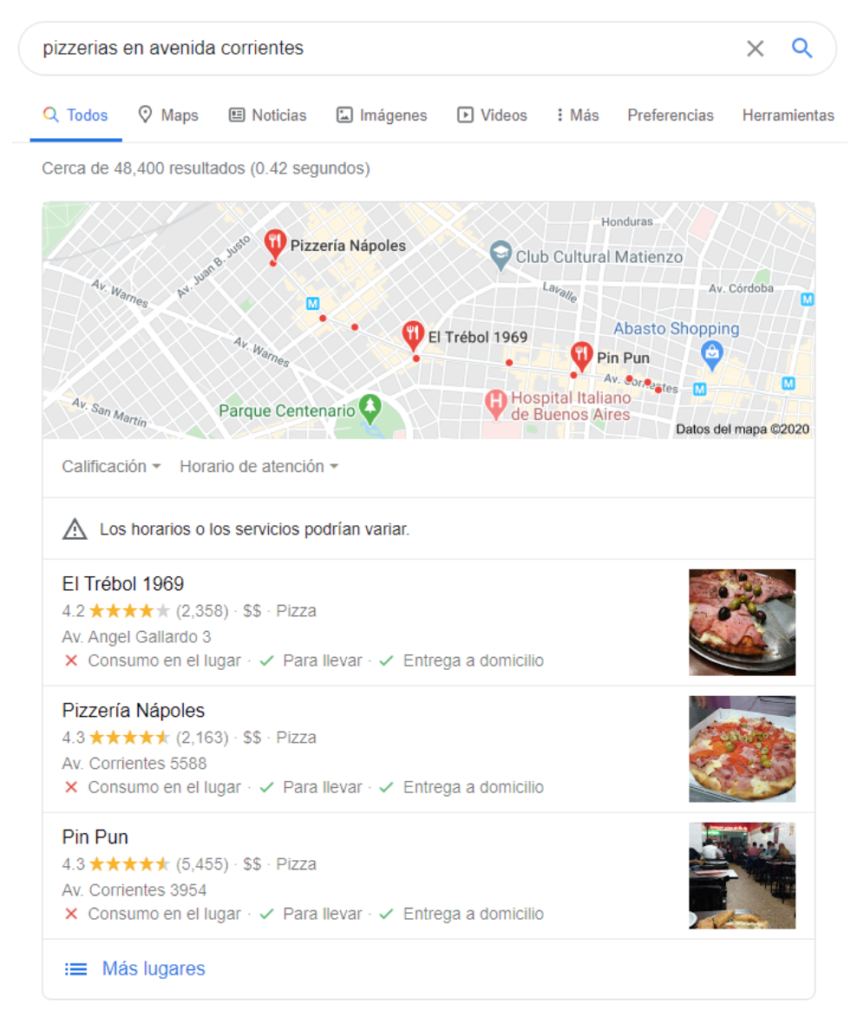
5. Multiple search intent:
Although there is this previous classification, sometimes the user may have multiple search intentions in the same query.
Continuing with the last example of “pizzerias in avenida corrientes”, the user not only wants to know the location, rating, and opening hours of the pizzerias: perhaps they can read reviews and notes from blogs and press about these places to complement the decision of which one they will go to eat.
Final Recommendations
Adjusting your content to each of these intentions will not only help you position and get more visits: but it can also improve the usability of the user on your site in terms of sessions and conversion (in the case of eCommerce).
Juan González Villa, from https://useo.es/ in his article on search intent shares a table that is worth including in our article to define the types of search results related to the types of search intent.
